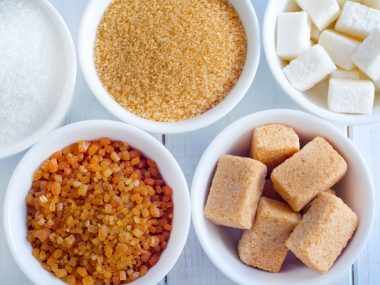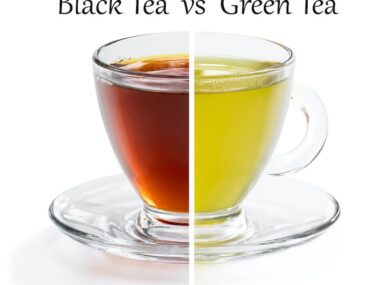We have some uber easy tips to elevate the taste in your cup of tea. There’s always a reason for bad-tasting tea. So, why compromise on taste when you can make a great cuppa?
Table of Contents
Tea Isn’t Supposed To Taste Bad
There’s nothing worse than taking that first swig of tea to find that it is beyond palatable. Numerous things alter tea taste. Sometimes it can be as simple as the water you use, or it can be a chemical change that occurs after brewing it.
So, why does tea taste terrible? Let’s check out some things that you can use as a guide to avoid the shock of a bad cup of tea!
Tips For The Best Tasting Tea
It helps to look at the whole picture when it comes to making tea. Everything from buying the right tea to using the right water and even that cup you use to drink tea from affects the overall taste of tea.
Loose-leaf Vs. Teabag Tea
- Why Is Loose-Leaf Better Than Teabags?
Most teabag tea is made from fannings and dust from processed teas. It’s basically the residual tea dust and tiny pieces of tea leaves that fall to the bottom during processing.
Teabag tea is much more astringent and bitter. Loose-leaf tea is of higher quality because it’s typically made from whole tea leaves. Loose-leaf tea is much brighter, sweeter, and the tea’s true flavors come through when brewed.
- How Can I Get More Flavor Out Of My Teabag?
If you prefer the convenience of teabags, you can purchase a good-tasting tea that consists of silk tea bags with hand-filled loose-leaf tea. Once you drop your tea bag into a cup of hot water, let it sit in the hot water, and as tempting as it may be, don’t dip the tea bag up and down in and out of the water. Dipping tea bags up and down does not allow the tea to steep properly. Lastly, avoid squeezing your tea bag because it releases those astringent tannins.
Avoid DIY Tea Blending Before Researching
- Tea flavor can be enhanced by blending in other teas, spices, or even fruit. When blending or infusing anything with tea, be careful not to mix flavors that clash. It’s best to do a bit of research on recipes and videos on how to make the perfect blend.
Select The Right Tea To Fit The Occasion
- High caffeinated tea such as black teas or matcha should be consumed in the morning or early afternoon. Drinking caffeinated tea later than that can interfere with getting to sleep.
- For a boost of energy, peppermint tea or matcha gets you going. If you want to enjoy a tea to help you sleep, try lavender or chamomile tea.
- Tisanes (herbal tea) are often made from select herbs to help treat certain ailments. For those days when you are feeling a bit “under the weather,” many tisanes are said to be beneficial.
Store Your Tea Properly
- Tea is often only as good as how it’s stored. Air, humidity, and light are loose-leaf tea’s worst enemies. When purchasing tea, please keep it in an air-tight container in a dark, cool place away. Most tea retailers package tea in resealable pouches. These pouches are ideal for storing your tea.
- Don’t use expired tea. It may not taste too great!
Use The Right Teaware
- Did you know that the very cup you use for tea can either make a very bad tasting cup of tea or a great tasting one? BBC published an insightful video on how tea should be consumed from a teacup rather than styrofoam or cheap paper cups. Tea molecules are absorbed into takeout cups which rob your tea of its flavor.
Use Filtered Water
- If you’re wondering, “Why does tea taste like metal?” That’s because your tap water may have heavy metals present. If you notice this metal taste, you may want to have your well or city water tested. Metal cups can also cause your tea to have a metallic taste. Using a ceramic or porcelain teacup is best.
Brew And Steep According To The Tea
- Different teas require different brewing temperatures and steeping times. Black teas are brewed at higher temperatures and steeped longer than green or white tea. Brew and steep the right amount of time at the right temperature according to the tea.
How Long Does Cold Brew Last?
- It’s best enjoyed within 12 hours of brewing. Anything beyond that, you will notice the tea starting to taste bad.
Can Hot Brew Tea Be Reheated?
- We don’t recommend reheated hot brewed tea because of tea degradation. The initial brewing starts the degradation process. Reheating furthers that process.
Can Teabags Or Loose-Leaf Tea Be Brewed Over Again?
- Hand-filled loose-leaf tea bags and loose-leaf tea can be brewed up 2-3 times. After that, you will find that the tea doesn’t taste so great. As for other teabags, toss them after one use.
Tea Additives
Dairy
- Adding the wrong dairy to your tea can cause a bad-tasting cuppa. Regular milk, half and half, almond milk, and oak milk go best with black, green, oolong, and white teas. Coconut milk is one of those dairies that go best with a tropical tea.
Tea Sweeteners

- Beet sugar has an earthy taste due to some impurities. Unfortunately, most beet sugar contains GMOs, so if you want a clean, non-earthy-tasting tea, using cane sugar or honey is best.
- Infusing your tea with fresh fruit, especially in ice tea, is utterly amazing. It adds a layer of flavor and natural sweetness.
Don’t Compromise On Taste
Drinking tea should be a pleasurable experience. When it tastes terrible, it’s time to put the cup down and try again using our tips. Besides, why force yourself to drink something that tastes bad?






